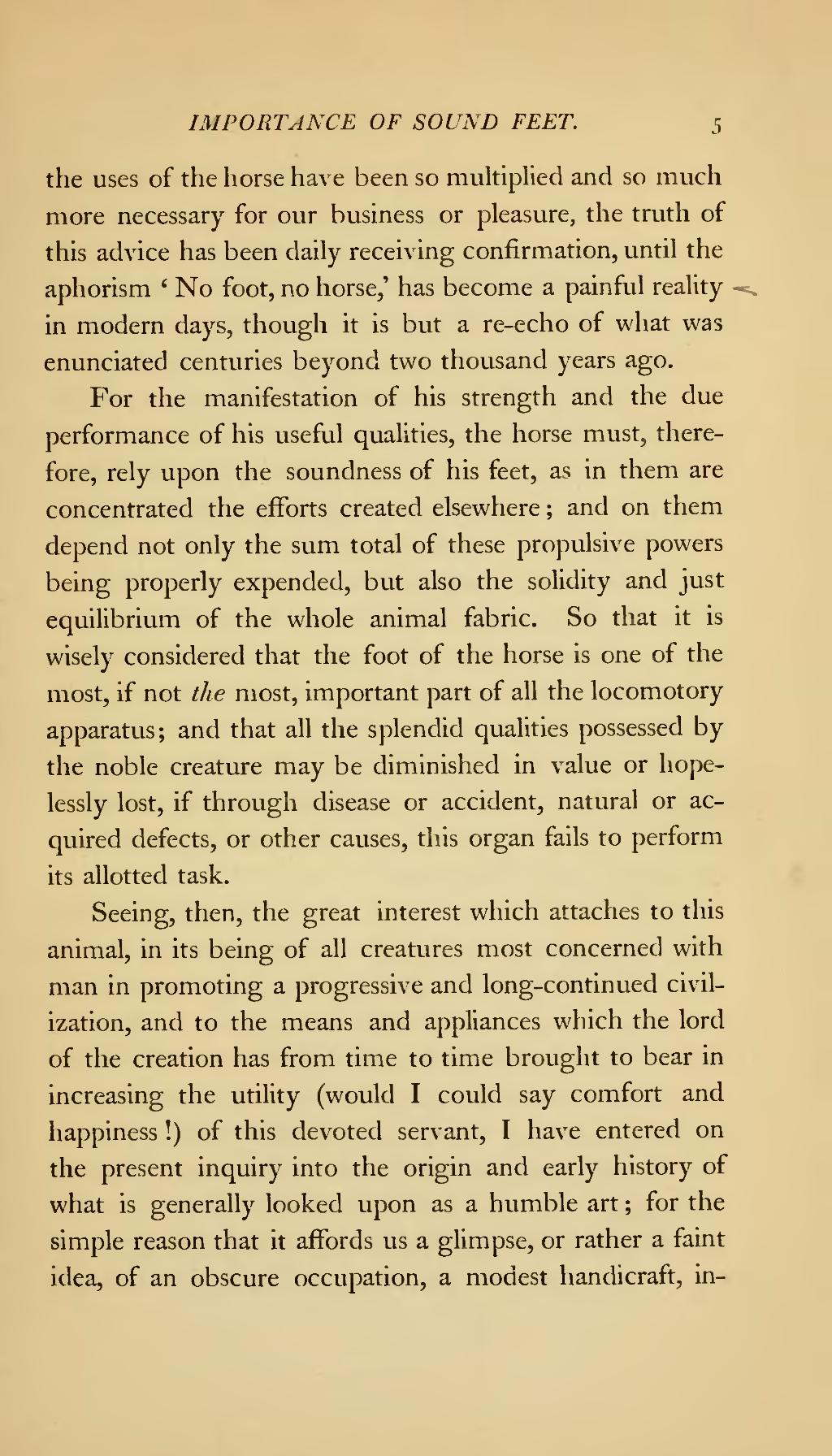the uses of the horse have been so multiplied and so much more necessary for our business or pleasure, the truth of this advice has been daily receiving confirmation, until the aphorism 'No foot, no horse,' has become a painful reality in modern days, though it is but a re-echo of what was enunciated centuries beyond two thousand years ago.
For the manifestation of his strength and the due performance of his useful qualities, the horse must, therefore, rely upon the soundness of his feet, as in them are concentrated the efforts created elsewhere; and on them depend not only the sum total of these propulsive powers being properly expended, but also the solidity and just equilibrium of the whole animal fabric. So that it is wisely considered that the foot of the horse is one of the most, if not the most, important part of all the locomotory apparatus; and that all the splendid qualities possessed by the noble creature may be diminished in value or hopelessly lost, if through disease or accident, natural or acquired defects, or other causes, this organ fails to perform its allotted task.
Seeing, then, the great interest which attaches to this animal, in its being of all creatures most concerned with man in promoting a progressive and long-continued civilization, and to the means and appliances which the lord of the creation has from time to time brought to bear in increasing the utility (would I could say comfort and happiness!) of this devoted servant, I have entered on the present inquiry into the origin and early history of what is generally looked upon as a humble art; for the simple reason that it affords us a glimpse, or rather a faint idea, of an obscure occupation, a modest handicraft, in-
